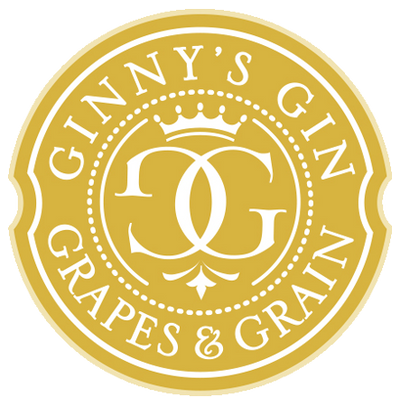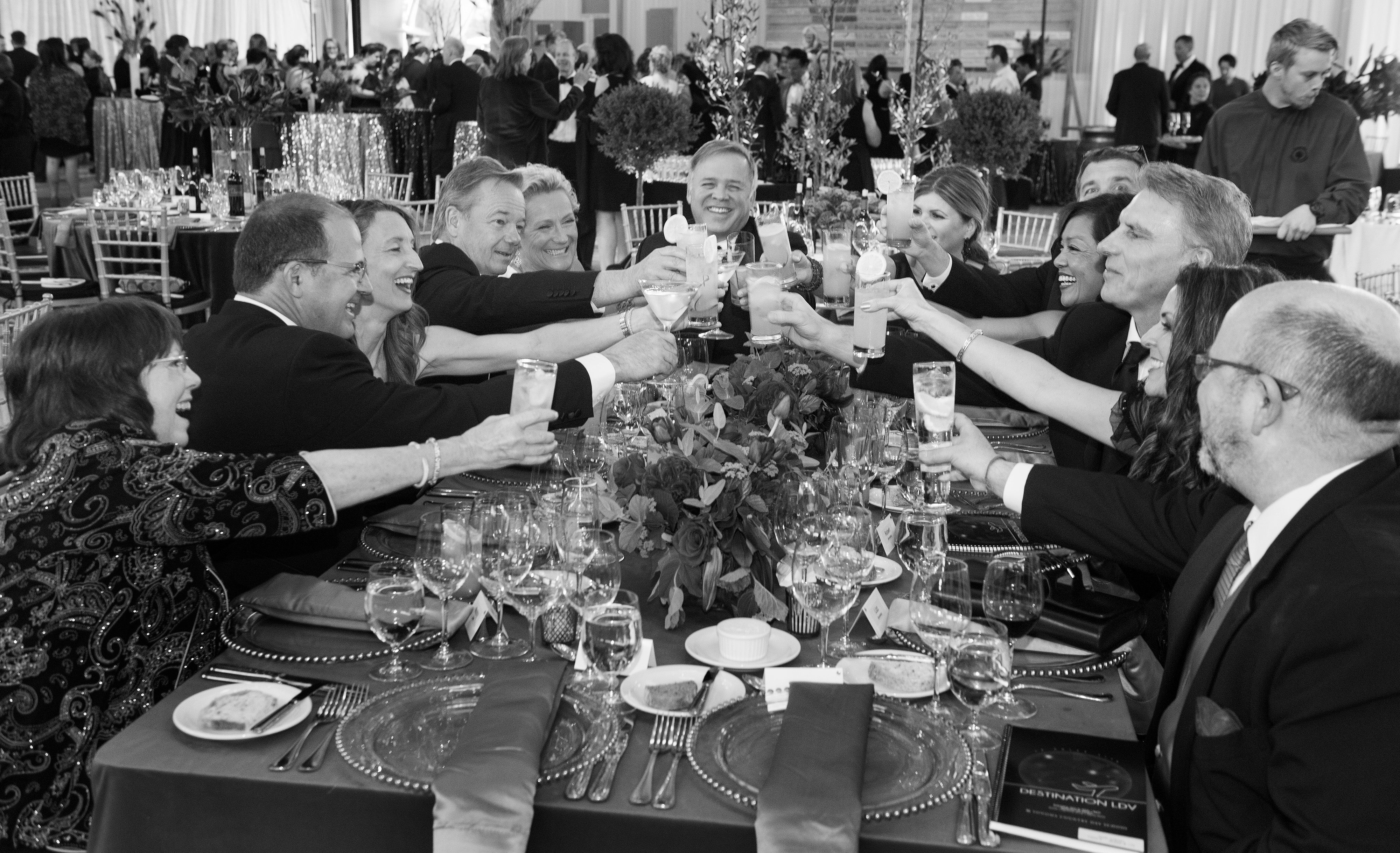
Hell no!
Write a blog they said. Hah! I have no problem swimming from Alcatraz to the mainland, hurtling at 70mph in a bobsled, heli-skiing or hucking a wind lip on powder skis with my teenage sons, but write a blog? Now that’s out of my comfort zone! So, bear with me while I get comfortable, pour myself a Ginny’s and Tonic and perhaps even have some fun!
When I got the phone call from our winemaking friends that they were just too consumed with their day jobs to continue making gin, I shared with our longtime friends and fellow gin lovers, Amy and Jeff Kloes, the idea of taking it on. Several "spirited" conversations and blind tastings later, they were equally intrigued. I visited local distilleries, carefully examined the craft spirits industry and did a market analysis. Many sleepless nights and numerous spread sheets later, I made a laptop presentation at brunch to Amy and Jeff and my husband. I answered questions, allayed fears, rebuffed negatives. The Kloes were in. My husband? Hell no. As a 30-year wine industry veteran, he was no stranger to the struggles small producers have with distribution. At coffee the next morning I shared my disappointment and recounted the story to a friend who asked to see the presentation. "I will lend you the money," she said. Just like that! And so, started the journey. Along the way, I turned to other friends for more help, advice, and encouragement. It truly does take a village to raise a gin. Thank you to all of you who have helped launch this enterprise.
P.S. Happily, my husband is now fully on board. He is our voice of reason, sounding board and biggest advocate! Oh, and our mixologist extraordinaire! We’ll keep you posted as he comes up with new recipes.

I need a stiff drink!
In less than a couple of months our eldest son will be graduating high school, heading to Europe for a boys adventure and then starting college and the next chapter of his life. I couldn't be more excited for him, but selfishly I’m also a bit devastated! I can’t imagine him not being in our daily lives - the lively dinner conversations, the weekend trips to Tahoe for ski team and the noise. The laughter of teenage boys downstairs playing ping pong or pool, the loud shouting (sometimes profanity-laced) while competitively playing those horrible video games and the constant banter back and forth between the two brothers, who have seemed much closer with his impending departure. I won’t miss the laundry, the endless dross of cans, glasses, food plates & snack packages that somehow don’t make their way to the kitchen and the wet towels that lie in a heap 48 inches away from the hooks for which they were designed. And what about the socks? Under the coffee table, in the hallway, strewn about the bedroom.

I remember my mother complaining about my eldest sister and how messy she was, but then many years later when she visited her newly purchased home for the first time she couldn't believe how immaculate it was! But of course we love them unconditionally, regardless of the mess and the smells and when they leave our home they take a piece of our heart with them. I recently heard the term “Tow Truck Parent” (one who allows failure but is always there to pull their kids out of the ditch) in comparison to “Helicopter Parent.” I hope I am more of the former - that is certainly my intent.

I can’t help but compare the raising of a child to the building of a brand. Constant attention, nurturing, pushing and advocating on their behalf until the child/brand can speak for himself/itself. We still have another son at home and I will enjoy giving him the undivided attention he deserves (I will still have to deal with the messes) and we also have a fledgling brand. There is still much work to be done.
For graduation day I am prescribing myself and all my fellow mums out there, especially those who have traveled this path with me since kindergarten, a box of tissues (perhaps hung around the neck) and a stiff drink (or three). Moderation doesn't seem appropriate on this occasion! We need at least three forms of booze and something summery because the date is in June. A Pimm’s Royale fits the bill; spiked with an extra shot of gin - Ginny’s of course.
Good luck and cheers mums (and dads, of course)!
Ginny’s “Get-Through-Graduation” Cocktail
Stir 2 oz Pimm’s No 1 and 1 oz Ginny’s Gin with ice. Strain into a chilled flute and top with sparkling wine or prosecco. Garnish with a slice of cucumber and strawberry and a sprig of mint.
Send it, Jack!

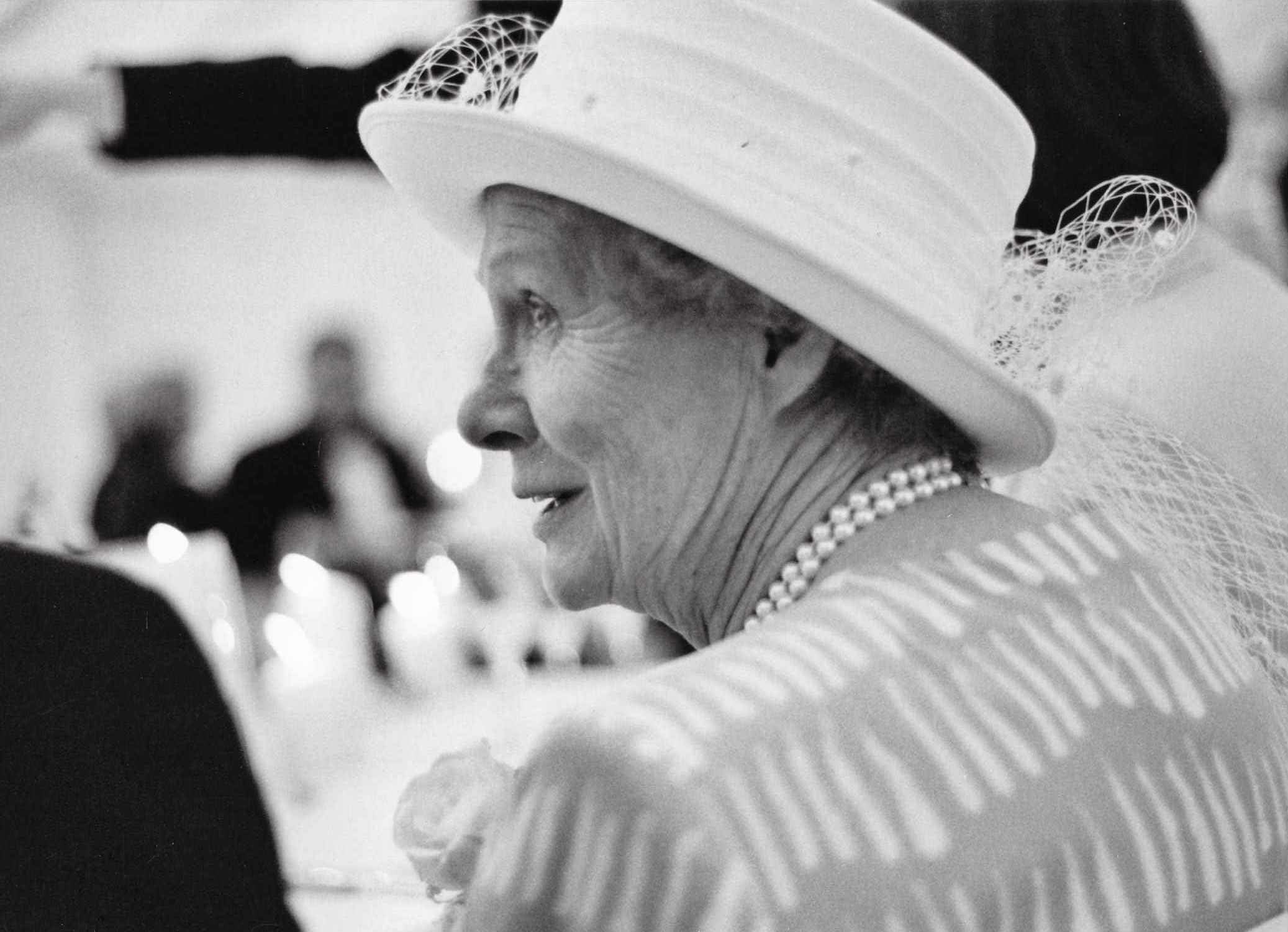
Hats, Horses and Henley
Summer is upon us and I have a myriad of hats in the closet calling for my attention, but most events in California wine country are a much more casual affair than those in my native England with all their traditions and dress codes! I do miss my millinery-mad countrywomen and the much-anticipated occasions on which we adorned our heads. You can take the girl out of Britain, but you can’t take the Brit out of the girl! The headline photo is that of my mum at our wedding back in the 90s.
But what is it with us Brits and hats? And for that matter, what is it with us Brits and gin? After pondering this for a bit, I realized that, besides us Brits, what hats and gin have in common is that both are de rigueur at the most well-heeled and well-attended events in England. One simply cannot arrive without wearing a hat to the Royal Ascot Races, Henley Royal Regatta, or a wedding of any kind, and quite frankly cannot depart without consuming gin. You may attempt both, but if the former, you may be turned away at the door and if the latter... I honestly don’t know what the consequences would be because I’ve never heard of it happening!

Hats & Horses
Founded in 1711 and HRH the Queen’s favorite horse race, Royal Ascot takes place in June and is the highlight of the British Racing calendar, crawling with celebrities, royals and celebrity royals (Megan Markle made her debut as the Duchess of Cornwall at this year’s races). Attending is as much about making an eye-catching fashion statement at the rail as making an eye-popping fortune at the betting window. But only if your ensemble gets you past the gates, as the dress code is rather Draconian. The rules state that women’s skirts must fall below the knee, strapless, halter or spaghetti strap necklines are prohibited, and your midriff must be covered.
But the hats!!! While anything goes style-wise - giant flowers, feathers, pinwheels, fish, flags, tulle, dioramas - whatever is on your head must be worn at all times! And while all the rage in Britain, Fascinators are not allowed in the Royal Enclosure which requires that attendees wear a headpiece which has a “solid base of 4 inches or more”. But since the rules say nothing about the height, I’d put any self-respecting British fashionista up against Vegas showgirls any day.
Queen at Royal Ascot for FIFTH Day on the Trot
as Boozy Punters Drink Racecourse Dry of Pimm’s
This was an actual headline in Britain’s The Sun news rag on the final day of this year’s races. With a highly-guarded secret recipe concocted in the 1840s, Pimm’s #1 is one of England’s most popular summer beverages and is a gin-based liqueur flavored with fruit and spices. Try my homemade version which adds Ginny’s Gin, Martini-Rosso, lemonade, cucumbers, mint, strawberries and an orange slice!
Growing up in the Cotswold’s, we were all pony-mad and I kept mine at my friend’s grandfather’s farm next door, where she kept hers. Her grandfather was into the racing scene and was bringing on a racehorse named “Fighting Kate” after his daughter Katherine. Our closest track is Cheltenham Race Course and its most famed race, the Cheltenham Gold Cup is the highlight of the Jump season. Turns out the filly had great potential and, as an outsider, great odds on race day. I had been saving my pennies for months and laid every one of them on Fighting Kate to win (well, my mum did it for me). And win she did! Imagine a 10-year-old in 1975 with £100 pounds. I think that’s the one and only time I’ve bet on a horse, but I have continued attending races around the world and each time I don a hat and sip a gin cocktail (except for that Mint Julep on Derby Day - and of course you can substitute Bourbon for Gin for an equally fabulous cocktail).
Hats & Henley
Following close on Ascot’s heels is Henley Royal Regatta, held since 1851 on the River Thames. Spectators flock to its shores to watch hundreds of crews compete from around the world. The course is over two thousand meters long, providing loads of riverbank on both sides for laying out a rug, a picnic lunch and a traditional Henley libation - either Gin and Tonic or Pimm’s - to watch the crews. Between races and refills, many spectators play lawn games, nap or take river cruises.
As some have discovered in years past, wearing an ensemble that worked at Royal Ascot doesn't necessarily translate to regatta success. High hemlines, trousers, culottes and shorts for women and jeans on everyone are out of the question, and anyone who has other ideas and arrives with a thigh-high split in their skirt will be handed safety pins by stewards. Most ladies choose classic formal dress, topped with a cocktail or picture hat. Men, meanwhile, are required to wear lounge suits or traditional striped blazers which represent various rowing clubs, along with a tie or cravat.
Last month, a lovely invitation arrived from my boarding school alma mater, inviting me to join the Wycliffe College Boat Club at Henley. And while I couldn’t attend, the missive transported me back to my competitive rowing days at Wycliffe. The summer after I turned 15 I had surgery on both feet and spent months in plaster up to my knees. Even though I returned to school in the fall cast-free I was restricted to non-weight-bearing sports, so instead of suiting up in my customary field hockey cleats, I plopped my bum onto the seat of a scull, grabbed the oars and took to the water. I raced as a single sculler (perhaps assigned thus to keep me from socializing on race day) and finished the season with a brave completion of the River Thames Championship Course at the annual Scullers Head of the River Race.
That season with the Boat Club wasn’t all work and no play (have you met me?!) During practice sessions on the Gloucester-Sharpness Canal, we would row past the chocolate factory sitting right on the bank. With its huge back doors open, and the aroma of cocoa beans wafting across the water, we would call to the employees and beg fetchingly for a sample. Often we were rewarded with grand unfinished blocks of chocolate for the trip back to school. And on occasion my female teammates and I would leisurely row well past the factory (and thus out of view) to sunbathe topless. But I do remember being dragged into our Housemistress’s office and reprimanded for rowing braless because it was “putting the boys off their stroke”!

Hats & To Have and To Hold
So there is this Graham-Smith family thing from my sister Sandra, that if someone in our family or a friend has been dating someone steadily for a while, the question will arise: “Is it time to buy a hat?” The implication being of course that we suspect we may be about to receive news of a wedding, to which you're always expected to wear a fashionable, show-stopping hat.
Unlike here in the U.S., it is not taboo for wedding guests to wear white to a British wedding and bridesmaids often dress in white like the bride—who, BTW, pays for their gowns. (If you’re being asked to look like a meringue, you shouldn’t have to pay for the indignity as well.) And as for the men? Morning dress—tails with gray trousers - is very traditional in England for weddings. I suppose it helps them get away with the deliciously rude and mortifying speeches about the groom that are highly anticipated at all English weddings, rather than the arse-kissing that passes for toasts in America.
Champagne may be the quintessential celebratory drink at a wedding reception on both sides of the pond, but we at Ginny’s Gin prefer to kick it up a notch with a French 75 or a Pimm’s Royale, both of which feature gin but make room for sparkling wine. Be sure to check the recipes in our cocktail section - cheers and happy summer!

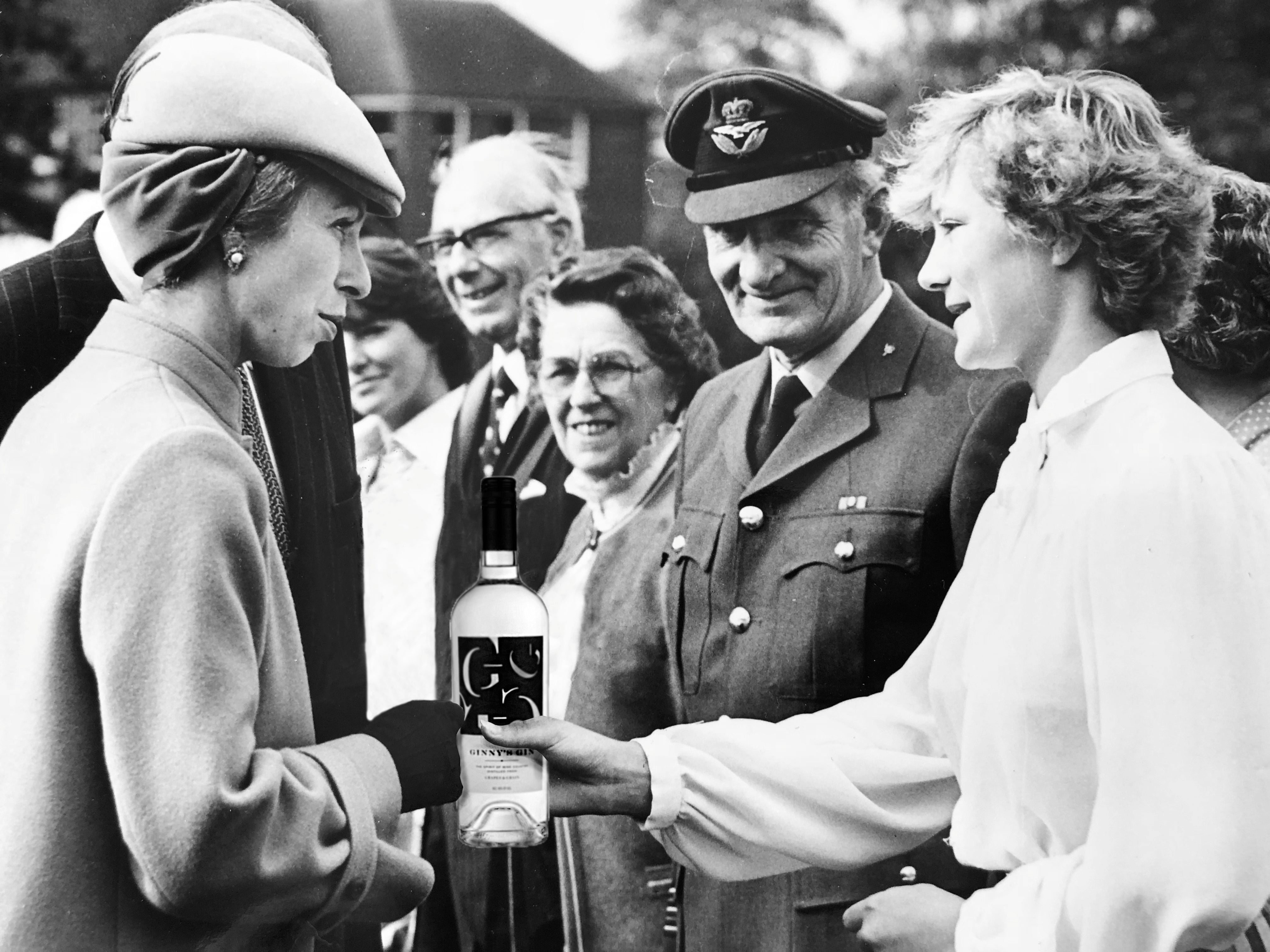
A Right Royal Distillation
It takes a village to raise a gin, and we baby our beauty right from the still until it passes your lips! As it happened, our most recent distillation started life on the very day of the Royal Wedding, when Prince Harry and Meghan Markle, now the Duke & Duchess of Sussex, began their married life together. It got me thinking about the many royals who enjoy a gin tipple now and again (and again and again).
The late Queen Mother passed on her love of gin and Dubonnet to her daughter, Queen Elizabeth, in the same way I inherited my love of gin and tonic from my own mother. The Queen is said to drink one every day as an aperitif with lunch - seven parts gin, three parts Dubonnet, a single slice of lemon with the pips removed, and lots of ice. As one of the most well-travelled monarchs in British history, the Queen never travels without a few of her home comforts and her staff dutifully pack the booze and lemons wherever she goes in case she gets thirsty!
Prince Charles, heir to the throne, is partial to a Gin 50/50 Martini, with equal parts gin and vermouth, while his wife Camilla was purported to say after emerging from a tense meeting with Prince William regarding her relationship with Charles: “I need a gin and tonic!”. Other notable members of the Royal family who enjoy this very traditional English spirit include the scandalous Sarah Ferguson, Duchess of York, and our newest fairy-tale princess, Meghan Markle, said to favor the iconic Italian Negroni made with one part gin, one part vermouth rosso, and one part Campari. (Check our cocktail page for a Ginny’s Gin variation).

Meanwhile, the Queen’s only daughter, Princess Anne, emerged from this juniper-laced legacy a teetotaler, despite my best efforts to tempt her with our singular elixir. While on a tour of suitable schools for her two children, the Princess visited Wycliffe College boarding school, where I was then a student. To my delight, I was selected to join the receiving line and present her with welcome flowers from the student body. Ever the enthusiastic promoter, I selected botanicals (sage, iris, juniper) for the bouquet and smuggled in a bottle of Ginny’s Gin under my kilt to offer for her consideration as well. With regal aplomb, however, she accepted the bouquet but deftly passed the gin on to the official next to me, who clearly coveted it anyway.
So, back to our distillation! Much like a wedding, there’s a lot of preparation that takes place behind the scenes before the actual event. Our sagebrush only grows at high elevation, so Rob headed up to Lake Tahoe at 5am to forage for this aromatic botanical at 6,000 feet. Soon after he returned with a pickup truck bed full of this treasure, we spread it out to dry under lights on our pool table for a couple of days, then picked the leaves off the stems and spread them out again on our French door screens for another day in the sun. My fingers were darkened by the oil and I swear I smelled like sagebrush for three days!
Next up, we milled the juniper and coriander to release their aromatics and then macerated them in the grape spirits for 24 hours. Almost immediately, the botanicals turn the clear spirit brown! Distillation take place after that with our eight other botanicals hanging in the helmet of the copper pot still to gently infuse the spirit vapor as it rises. Next our winemaker palettes are put to the test, as Heads and Tails are cut and discarded and only the heart makes it to our three rounds of rigorous blending trials to determine the ideal marriage of grape and grain spirits.
We would be remiss if we didn’t give a hearty Huzzah! to Sonoma Brothers Distilling and owners Chris and Brandon Matthis, our knowledgeable hosts and stewards in this adventure. They have been ever accommodating, consummate professionals and a true pleasure to work with. And if the royal and nuptial themes were not already over the top, the distillery is located in Windsor! Be sure to visit their tasting room and sample their vodka, whiskeys and brandies (but not their gin - just kidding! ; ))
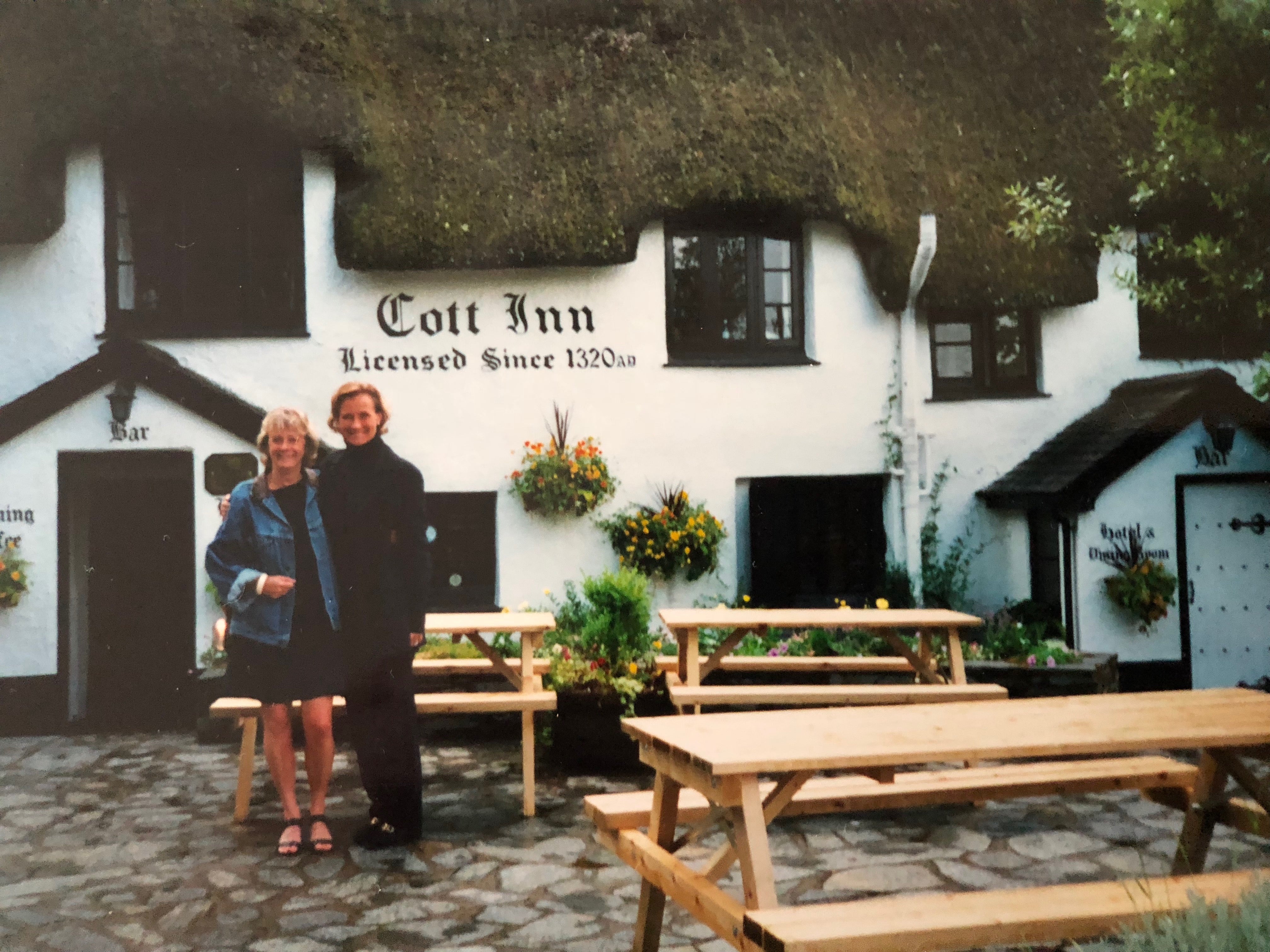
My love of British Pubs
When people ask me what I miss most about the motherland, I always respond with the obvious: “family and friends”, but a close third on my list would be the pubs! You might ask why, since America does not lack for drinking establishments. The fact is that English public houses (“pubs”) are so much more than mere “drinking establishments”; they are where we Brits grow up. A prominent part of British life, the pub welcomes young and old, prince and pauper. In your “local”- your favorite, most oft-visited pub - you are just as likely to find yourself chatting with the local judge as the local plumber.
Public places in Britain date back at least as far as the Romans, who opened them along the roadsides to fortify occupying Roman soldiers with wine, and hung vines outside to indicate the offerings within. Centuries later, at a time when most of the working population were still illiterate, medieval publicans would hang distinctive objects outside their establishment, to distinguish them from their competitors, giving birth to the first iconic pub names such as The Plough, The Copper Kettle and The Boot.
Throughout history, ale and beer have always formed a part of the staple British diet, the brewing process itself making it a much safer option than drinking the water of the times. Thank goodness, however, Gin arrived on our shores in the early 18th century, so cheap and cheery it ignited a craze that swept the country and inspired the building of temples at which to worship this new holy spirit – the ornate, ostentatious “Gin Palaces” I mentioned in my last post. Eventually, laws restricting gin’s consumption throttled the craze to a mere frenzy and these glittering altars to alcohol faded from the landscape, yet their design influenced many aspects of later Victorian pubs that remain to this day: the gilded mirrors and etched glass, as well as the shop-counter style bar to which we all belly-up.
My first recollection of such a pub was at the age of seven after my parents moved us out to the Gloucestershire countryside. Sunday Roast lunch would be preceded by drinks at the 16th century Coal House Inn on the banks of the River Severn (us kids would be allowed a packet of crisps and a bottle of coke). In the morning I proudly helped mum prepare the large meal which might include lamb (I made the sauce with mint I collected from the garden), beef and Yorkshire Pudding (I grated the horseradish for the dressing) or chicken accompanied by bread sauce (which I worked hard to make the right consistency). With the meal prepped and the oven-timer set, my mother led us all on foot to the pub to relax and socialize over Gin & Tonics with a large crowd of family members, knowing that all there was left to do upon her return home, nicely “warmed” from her libations, was pull the roast from the oven and make gravy from the drippings.
Often, I will recall important times in my life simply by visualizing a specific pub. For instance, there is The Snooty Fox (named by a proprietor snubbed by the local hunt club) or The Farmers Arms where we preteen equestrians assembled for the Hunt Stirrup Cup, named for the goblet filled with port or sherry that made the rounds prior to the hunt. Having known me for ages, the publican would sneak me a small tot to calm my nerves as our horses fidgeted and frothed at the bit in excited anticipation of the day’s impending ride. Other pubs near old hunting grounds brandish names such as The Greyhound or Dog and Duck. What an exhilarating time: miles of hills to gallop up and down - ditches, hedges and gates to jump!
Other public houses such as The Saddlers’ Arms or The Golden Fleece (for the wool trade), chose to associate themselves with the predominant trade in the area to attract its craftspeople. During my time at boarding school, as we approached legal drinking age (18 in Britain), we would sneak out to meet our day pupil, driving girlfriends Lynn and Jo, to get a lift to the pub. When our memorable achievements should have been high GPAs and college acceptances, our greatest feat by far was the time we managed to get 10-up in Jo’s Mini Cooper and ascend the hill to The Carpenter’s Arms!
Another recurrent theme is heraldry: The Red Dragon formed part of the Welsh coat of arms, The Unicorn part of the Scottish and the White Boar was from the emblem of King Richard III. Names like The Crown were another easy way of pledging support to the reigning monarch without having to change with the occupant of the throne. After college and a stint abroad, a few of us school friends assembled at The Green Dragon to catch up. After an especially lubricating lunch we decided to attend the local Cowley Church fete. Turns out they were having a Tug-of-War to raise funds for the building of its new roof. Ever the philanthropist, I put together a scratch team, made myself front man and christened us “The Melons”, a nickname given to me by my old schoolmates (I happened to attend a boys boarding school at the time they had just started accepting girls!). When faced with a rather professional-looking opposition anchored by a huge rugby player, I impulsively executed a rather provocative diversionary tactic intended to put all on the other side of the rope off their stride and which landed my photo in newspapers across the country! The articles, with heated headlines such as “Ginny’s Storm in a D-Cup!” and "Heave Oh!" claimed that the vicar was outraged when in fact, during tea at my sister’s the next day, he admitted that he hadn’t even seen it.

Pub names offer a glimpse into the past of an area, even when all other evidence has disappeared. The Leg of Mutton is a common name, mostly found in villages that used to raise sheep. The Hung Drawn and Quartered and The Strugglers were likely close to the site of a hangman’s noose. Pubs were also places to enjoy entertainment - such as cock-fighting or bear-baiting, hence Ye Olde Fighting Cocks or The Dog and Bear. While I swear I baited nothing other than an overgrown rugby player in my time, when visiting from afar I gravitate to those pubs that are associated with the longtime friends that live, or used to live, nearby. The Hunters Hall is a go-to when visiting Bob and Anna at Bagpath, The Bunch of Carrots where, as students, we would congregate when visiting Jamie (a pub which owes its name not to vegetable-worshipping farmers but to an unusual rock formation in the nearby River Wye), The Ferry Inn where we dined on fresh crab sandwiches and pints of cider while holidaying in Salcombe and The Bathurst Arms where we'd meet up with friends who were attending the nearby Royal Agricultural College.
In England’s pubs I acquired life skills by mastering Skittles, Darts, Snooker and the nuances of a coin game called Spoof. Then there are the pubs where I fell in and out of love, where as students we discussed our dreams and fears, comforted each other during difficult times and where I always visit with family and friends each and every time I return to “Old Blighty”.

The Lure of Gin Palaces
A Gin Palace was originally the English name for a lavish establishment selling gin. The first 'Gin Palaces' were built in the late 1820s, with interiors influenced by the new fashionable shops being built at the time and fitted out handsomely with ornate mirrors, etched glass and elaborate gas lights. Architectural Magazine described the ideal style in 1834: “He who most lavishly bestows plate glass and gilding, together with a happy corruption or combination of all three of the Grecian orders into one, is the most likely to insure success to himself in these gin-drinking times.” They were, indeed, thought to be vulgar at the time, although hugely popular (some things never change).
As none of the original “gin palaces” survives in the 20th century, the term came to be used for large ostentatious pleasure craft, such as a motor yacht or luxury yacht, typically, moored in a marina and fitted with a sun deck used for outdoor entertaining and leisure, which normally involved the consumption of cocktails.
As if I needed further proof, beyond my home-spun moniker, that all roads would lead to gin, following the completion of my formal schooling, my natural inclinations and longings sent me directly into the path of one large, boozy pleasure craft after another.
It is customary in England to take a year off either immediately before or after attending university, the idea being that there’s no truer education than travel to give you a world view. Not the structured, parent-approved, American version of a “gap year” rubber stamped by Harvard, this was more of a serendipitous yet opportunistic walkabout with a one-way ticket to who-knows-where. Very few of my boarding school friends were surprised when my year out turned into a decade out.
One summer I was 18 and waitressing in Devon when I was invited by Lana & Peter de Savary, of America’s Cup fame, to lunch on their yacht Kalizma (or was it the Vagrant, Imp or Lands End – who knows which of the 40 or so boats he’s owned). They were chatting about his new venture The St James Club in Antigua. It sounded so exotic, I vowed to save every penny until I could afford a flight to the island and get myself a job at the club.
True to my word, I landed in Antigua that following summer with ₤30 in my pocket only to find that The St. James Club was still under construction (Bugger!). Damned if I was going to limp home, I landed a gig as a counselor at a posh kids’ camp after jogging down the beach to Curtain Bluff. Not long after, I leaped at an opportunity to join the truly juvenile crew of a 72’ Irish ketch named Chrismi of Sark which we sailed as far down as the Grenadines & Tobago Cays. Turned out that you could make good money living aboard a luxury yacht scrubbing staterooms, wrestling rigging & conjuring cocktails.
As an Aquarian (the Water-Bearer) growing up on an island, I guess I was drawn to the ocean, because this stint in the Caribbean definitely whetted my appetite for the wet (potable or not). Before I was sated I had crewed on Fantasia a 120' converted trawler in the Mediterranean, (and wooed by the velvet-lined Baccarat tables of Monte Carlo); a 120’ converted barge (complete with swimming pool) on the canals of Alsace (and enjoyed the generous hospitality of its celebrated vintners); and Bellini a 110’ motor yacht, along the Eastern Seaboard, Gulf Coast and Bahamas (where I was introduced to the fine points of managing a significant private wine cellar and my future winemaker husband, Rob).
Were they all “Gin Palaces”? From stem to stern in most every way. They captured my youthful lust for adventure, fine living (and intemperance), but vulgar they were not. They offered me responsibility and independence, a home and family (sometimes days away from land) and the surprise epiphany that I could fall in love with a boat, strangers and the water itself.

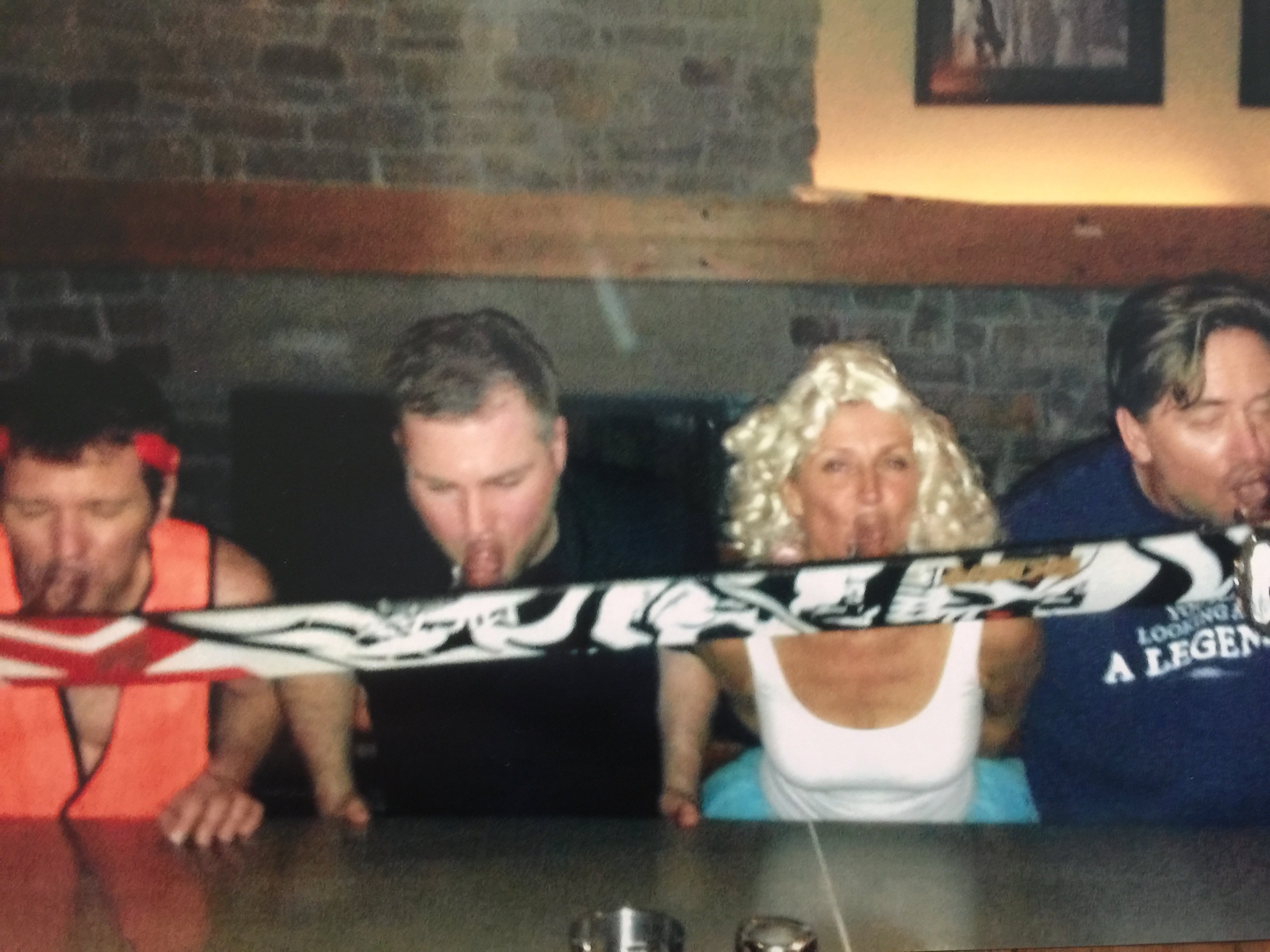
'Tis The Ski Season
Ski season is a welcome distraction this year. It’s something that we all look forward to right around the time that the clocks go back. In an attempt to mix business with pleasure we are also bringing Ginny’s Gin to fine establishments in the Lake Tahoe region and are excited to bring custom made Ginny’s Gin shot skis to a select few homes and bars.
I probably have way too many photographs in my collection and fuzzy memories partaking of shots from the ski. From the bar at Mica Heliskiing in Canada to the restaurant at The Yellowstone Club, Montana the shot ski has never failed to spectacularly get the party started! If you're not familiar, the shot ski is a retired ski which has been mounted with 3 to 5 shot glasses spaced at regular intervals. Revelers place themselves in front of said shot glasses with folks at either end holding the ski. The holders of the ski synchronize the shot drinking - if they mess up, everyone is wearing their shot!
The Ginny’s Gin shot ski sports four shot glasses that resemble mini ski boots which click into fully functional, releasable bindings. You can even choose your skill level. On the side of each boot, like a trail rating, you’ll find a circle (1 oz, the easiest), a square (2 oz, intermediate) and a double diamond (3 oz, for the advanced skiers and partiers among us!). I would like to give a plug to the folks at Shotzski who custom made our shot skis. Like our winemakers who spent years perfecting the Ginny’s Gin recipe, Scott Evans and his team invested years and sacrificed multiple powder days designing the perfect ShotzSki. Since this ski season is off to a slow start here in Tahoe, there seems to be more aprés than ski, so thanks for keeping us entertained, Scott!
As one ski patroller put it, we are anxious to see new snow from the heavens, not the hoses. And it will come, so check back here to follow more of our adventures in ski country. In the meantime, pray for snow and be sure to ask for Ginny's Gin in your favorite Tahoe bars and restaurants.
Cheers!

Gin to the Chin!
Ever since our teenage sons joined the Sugar Bowl Freeride Team and we started leasing at Serene Lakes during ski season, it has become one of our New Year’s Eve traditions to walk across the frozen lakes to watch the fireworks. Whether we’ve had a big, rowdy party or a more intimate dinner party, we are normally already warmed from our cocktail and wine consumption before setting out across the ice. This year in particular, after coming off a challenging (to say the least) end to 2017, we were anxious to ring in a fresh, new promising year. After dinner a friend and I set off walking well before all the teenagers had rallied and we walked towards the lake at a brisk pace, Martini in hand.
Several of us had already had fun on the lake the evening before, slipping and sliding and admiring the lakefront homes twinkling in their Christmas light adornment. This New Year’s Eve night didn’t seem as cold and a clear sky allowed a nearly full moon to illuminate our way. Many families had already congregated on the far side and some were dashing around on ice skates. The two lakes form a figure eight and as we carefully approached the waist, without warning, the ice cracked and I unceremoniously fell through the ice into the frigid water right up to my armpits! I had thrown my arms forward to arrest my fall and had spectacularly managed to save my Martini!
What strangely came to mind was a conversation I had had with the ski team coach while watching our eldest son compete at a Big Mountain Freeride Competition at Squaw. I was waxing on about getting into the gin business and he was equally enthusiastic and quite knowledgeable about the craft movement in both beer and spirits. He recounted the story of his mother who had a 1930s Shirley Temple milk glass which was used in some circles for making the perfect Martini (not the original intent of course!) After doing a little research I discovered that General Mills commissioned the Hazel Atlas Glass Co. to produce a breakfast set with the picture and signature of Shirley Temple. A set consisted of a bowl, a mug and a 4 1/2-inch milk pitcher. They were made of cobalt blue honeycomb pattern glass with white decals of Shirley Temple. The pieces were given away as premiums for Wheaties and Bisquick from 1934 to 1942.
So, how on earth did this relate to my immediate predicament? Well, turns out that Herb Cain of the San Francisco Chronicle used his pitcher with Shirley’s smiling face on it for mixing the perfect Martini, the formula being “Gin to the chin, vermouth to the tooth!” And there I was, in the icy water up to my neck, my Martini safely resting on the ice - Gin to MY Chin, vermouth to MY tooth!”
P.S. Happily, I pulled myself up, belly crawled the next twenty feet and stood up. No big deal. My friend alerted the teenagers to the danger, they circumnavigated the thin ice and disaster was averted. We all enjoyed the fireworks show and (after a hot shower) we rang in the New Year with Champagne and Gin cocktails from our custom made Ginny’s Gin shot ski. More on that later…..
Happy New Year!
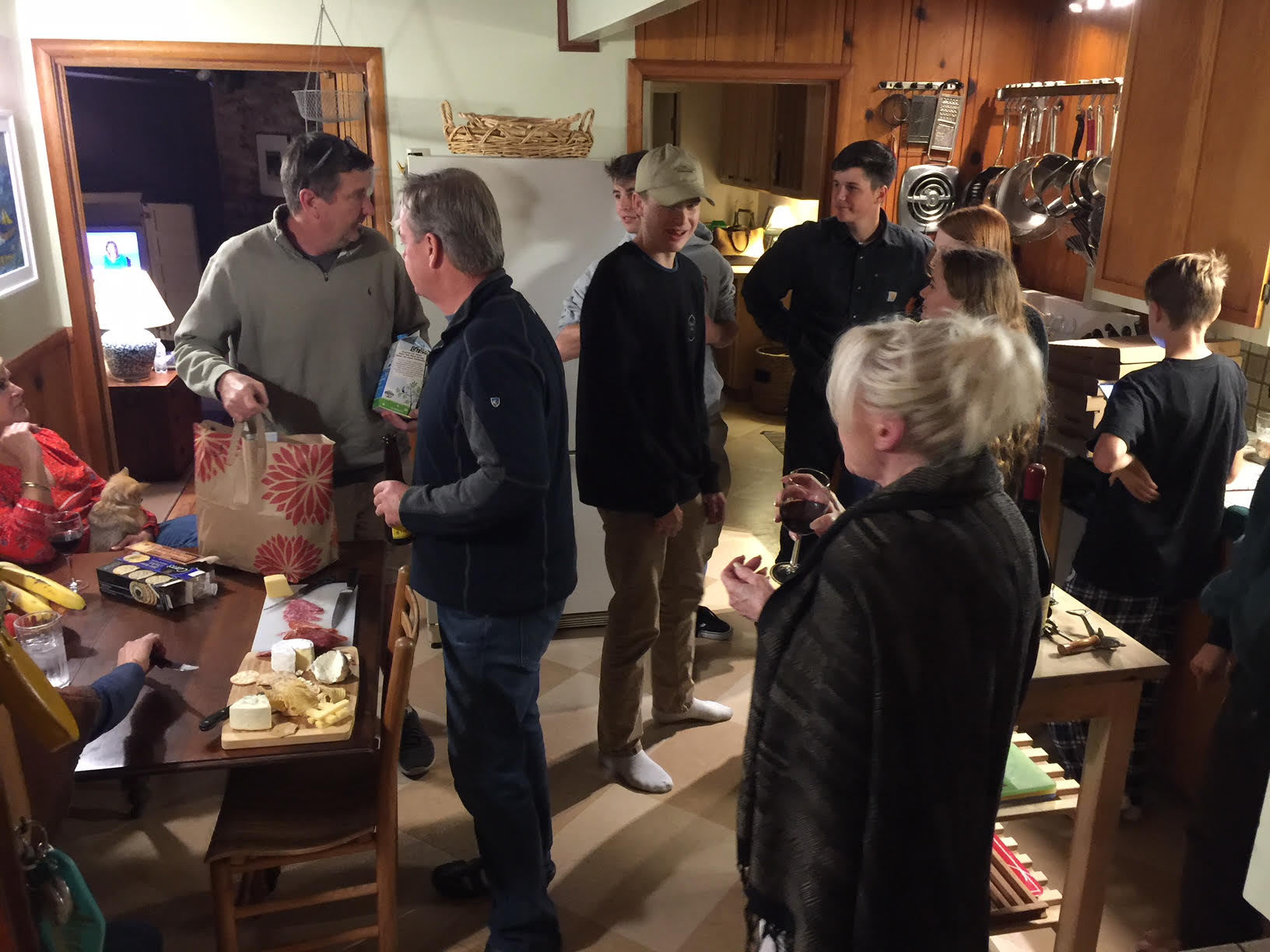
Fifty Days Since the Fires
Did I mention that writing a blog is out of my comfort zone? Well, this is probably the hardest blog I’ll write. It’s been fifty days since a terrifying firestorm ripped through our bucolic wine country community.

Some Gin (and Ginny) History
In past times, each Royal Navy sailor was entitled to a tot of rum (one-eighth of an imperial pint) and officers were entitled to gin. (This practice was only abolished in 1970!)
By 1850, Plymouth Gin was supplying the Royal Navy with custom-made "Navy Strength" gin (at least 114 proof or as we know it today 57% ABV) because if standard proof gin leaked on the gunpowder it failed to ignite. (Alcohol and gunpowder were stored together under lock and key).
The gimlet was invented by a Royal Navy doctor to ward off scurvy a mixture of gin and Roses lime cordial.
At the age of 18, my first G & T was courtesy of the Royal Navy in the Officers’ Mess while on a Navy acquaint course in Plymouth.
The British colonization of India led to the introduction of Tonic Water. "Tonic water was first enjoyed in 1825 when ingenious British officers in the Indian Army improved the bitter taste of their anti-malaria medicine (Peruvian quinine extract) by mixing it with soda water, sugar and gin".
Angostura bitters, created by Dr. Siegert in 1824 (named after the town of Angostura - now Ciudad Bolivar, Venezuela) was a useful cure for seasickness and also evolved as a way to disguise the acrid taste of the tonic. It is now produced by House of Angostura in Trinidad and Tobago.
While on a 13-month tour of Africa just after college, I was introduced to my first quintessentially British drink, the Pink Gin, (Gin with a dash of bitters) by family members that emigrated there after WWII.
During Prohibition, poor quality bootleg gin was called bath tub gin because that’s exactly where it was made. During college, my college friends and I would make a homemade Gin Pimms type of cocktail in the bath tub from Gin, Rosso Vermouth, Cointreau, mint, orange, strawberries, and cucumber.
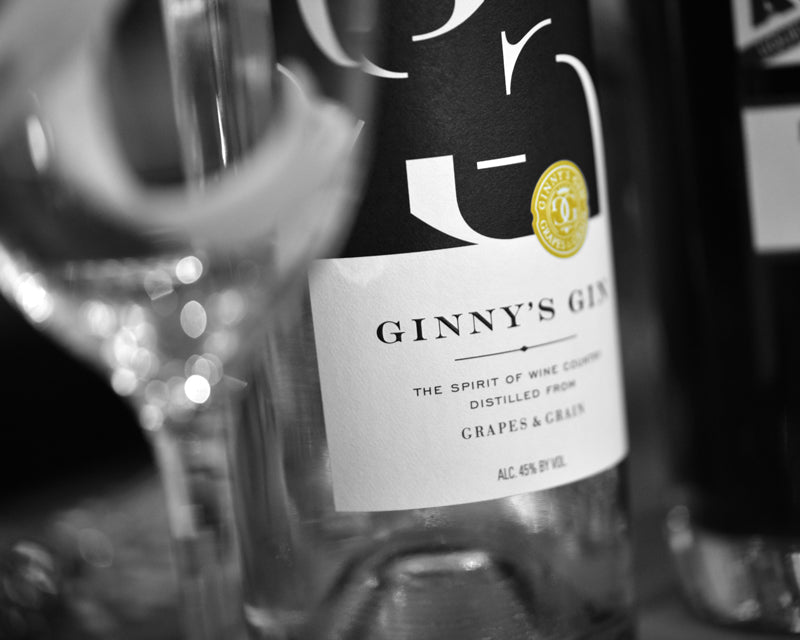
What’s in a name?
I was a mistake. When my mother, at the age of 41, gave birth to her fourth daughter she gave the job of naming me to my 3 teenage sisters. Virginia was the winning name, but they have been calling me either Gin or Ginny ever since.
It’s only taken me 50 something years to figure out what I want to do when I grow up. How fitting that I had the perfect name for it! Our gin is distilled from grapes and grain. When I came of drinking age (18 in my native Britain) my mother always warned never to mix grape and grain (apparently to prevent hangovers!). Well, whoever listened to their mother?!
